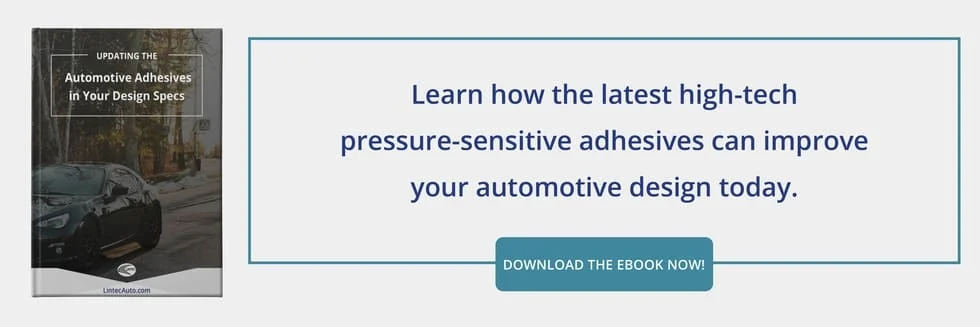Vibration-Damping Tape Solves These 8 Problems in Automotive Design

Automobile vibrations cause numerous challenges for automotive design. Fortunately, you can use vibration-damping tape to solve common engineer design problems like:
1. A Noisy Ride
Prudent application of vibration-damping tape can provide the passengers of a vehicle with a quieter ride. The foam backing or core of anti-vibration tape makes it excellent at diffusing road vibrations as well as sound waves (and accompanying NVH ratings). Of course, youre not likely to use tapes across a wide enough surface area to insulate riders from ambient road noise. But the ability to cushion trim, knobs, and other small, discrete components from road vibrations means that it will minimize rattling and buzzing in the cabin.
2. Tactile Vibrations
Road vibrations also cause small dashboard elements to vibrate to the touch. Proper use of anti-vibration mounting tape on emblems, knobs, dials, glovebox drawers, and console lids (or any other elements the rider contacts) can soak up these vibrations and make for a smoother, more comfortable experience for the operator.
3. Door & Hatch Impacts
Doors and hatches on vehicles are a significant source of shock impacts faced by vehicles on a daily basis. Vibration-damping tape can be positioned to cushion these impacts, reducing noise and protecting the vehicle from impact damage. As a collateral benefit, the vibration-damping foam acts as a seal for the tiny gaps around the door or hatch, which reduces ambient wind noise from outside the car and rattling of the door.
4. Sudden Jolts and Shocks
A pothole, frost heave, or other bumps in the road can cause a sudden jolt or shock powerful enough to jar loose or damage small plastic components. Over time, these sorts of shock forces commonly create rattling and buzzing in older vehicles. Use automotive foam tape beneath such elements (or to mount them), and theyll better absorb such shocks without damage.
5. Wear From Friction/Buzzing
Regular road vibrations create a form of friction that, over time, will wear down two surfaces that are buzzing against one another or loosen mechanical fasteners like clips and screws. Reduce the slow degradation of these surfaces by interrupting the contact between hard surfaces with soft automotive foam tape.
6. Mixed Properties of Unlike Materials
Vibration-damping tape strengthens bonds between unlike materials because of its malleability. Materials with differing thermal expansion or flexibility properties would stress or pull free from rigid adhesives, but anti-vibration tape can stretch or flex to remain in contact with the surfaces through subtle variations in their shape over time. This mix of metal and plastic in modern cars makes this issue increasingly common.
7. Heat Transfer
The foam in vibration-damping tape makes it an excellent insulator. Careful placement of the tape can offer some degree of heat shielding for parts you want to protect from the buildup of heat due to sunlight or the engine. Of course, youll need to choose a type of automotive foam tape and an adhesive layer that can stand up to the temperatures you anticipate on that side of the tape.
8. Gaps Between Uneven/Mismatched Surfaces
It can be difficult to bond two substrates with uneven or rough shapes that create inconsistent contact surfaces. The natural flexibility of vibration-damping tape allows it to form a forgiving bond area with varying thickness to match the subtle inconsistencies between the two surfaces. A tacky adhesive layer with high wet-out can ensure that the foam of the tape stays adhered even on a rough or ridged surface.

